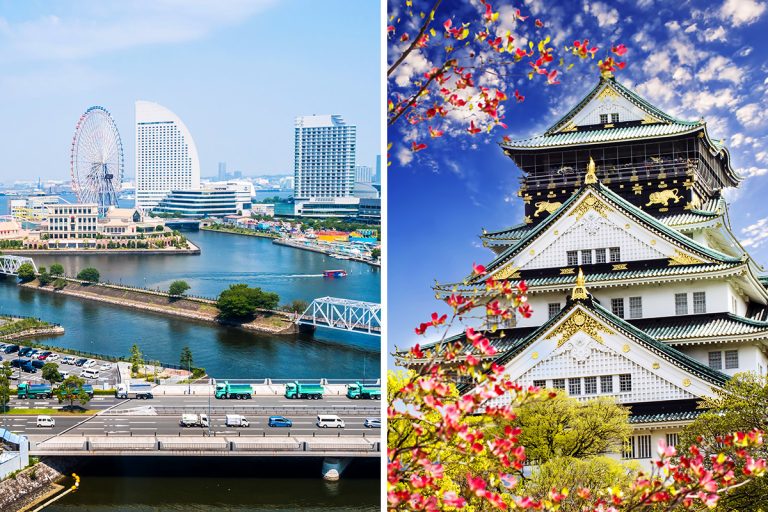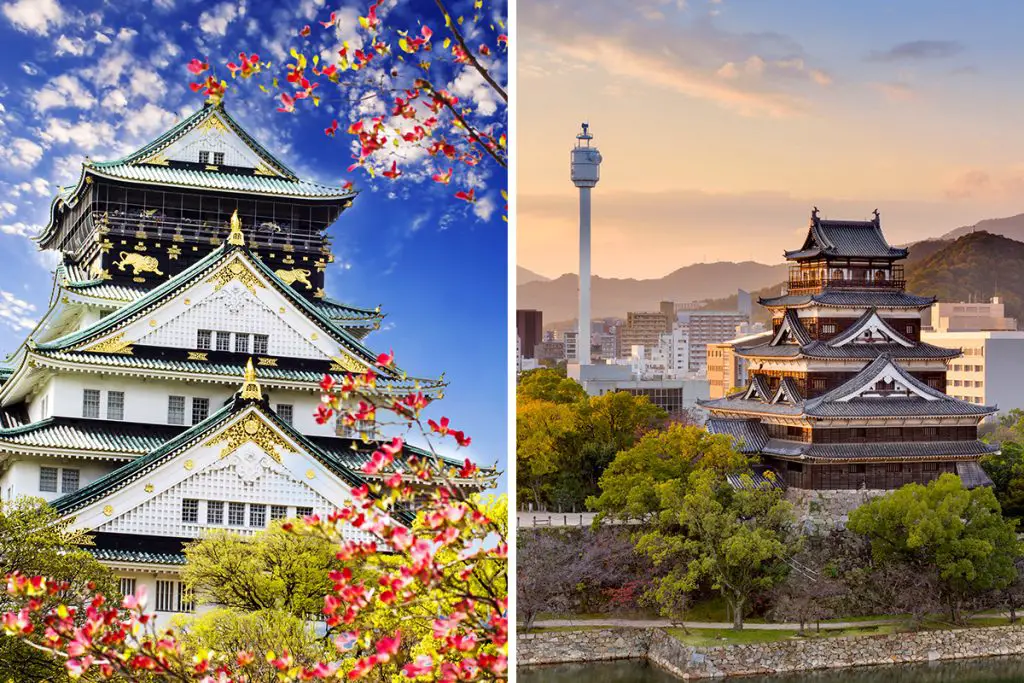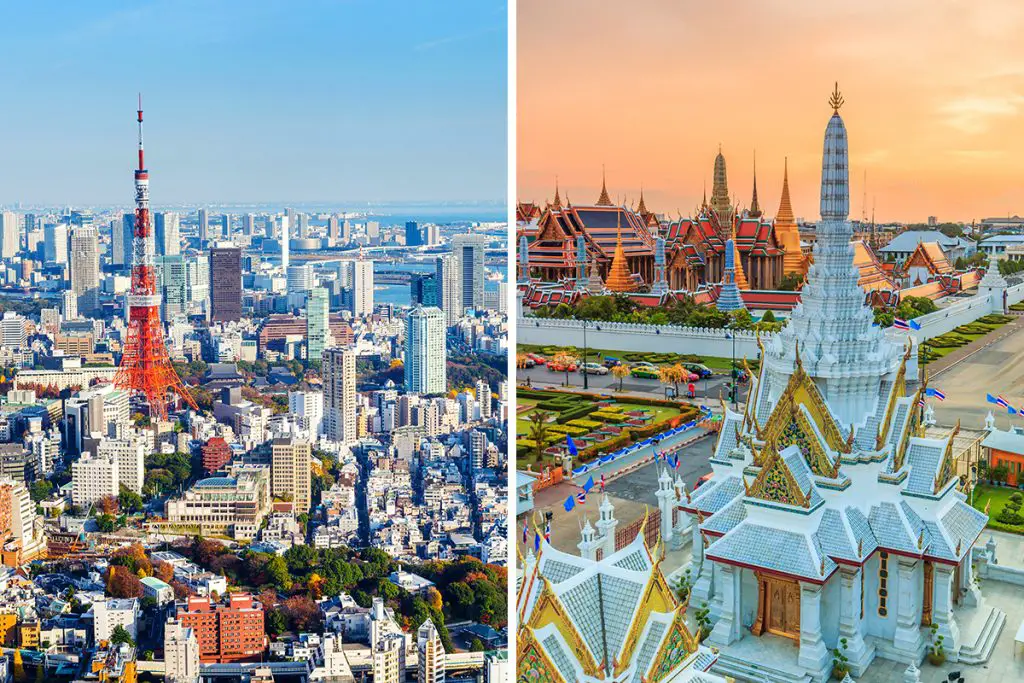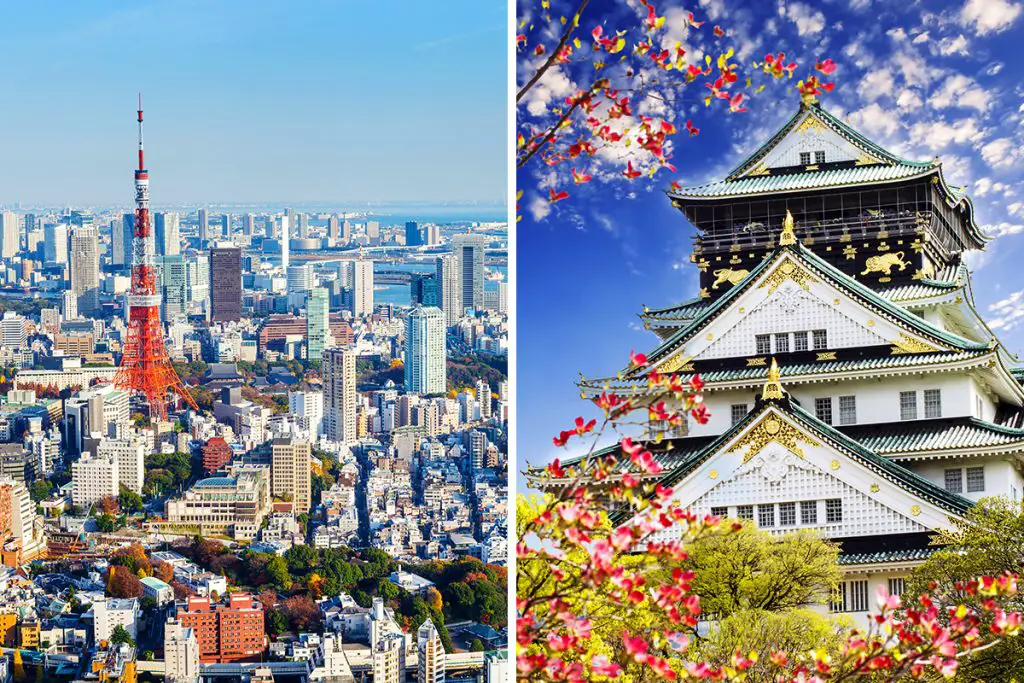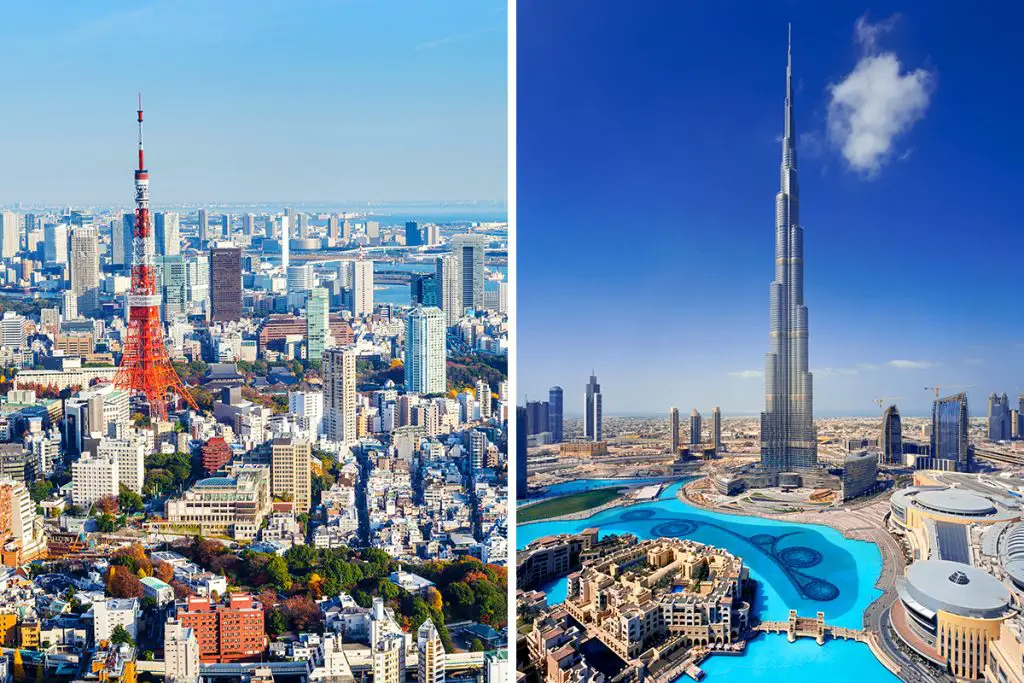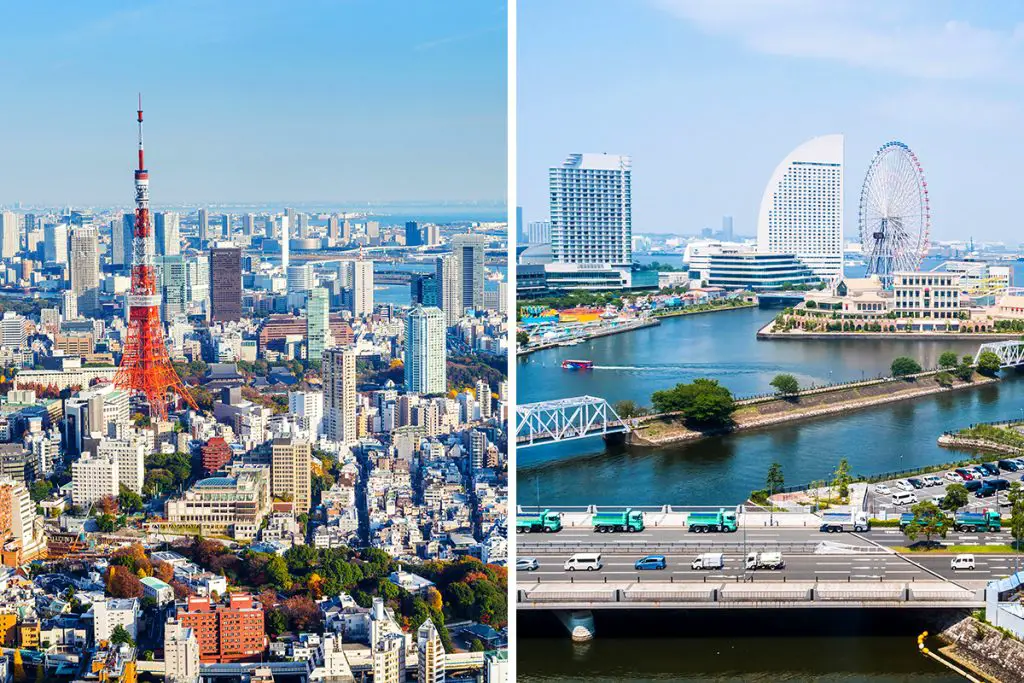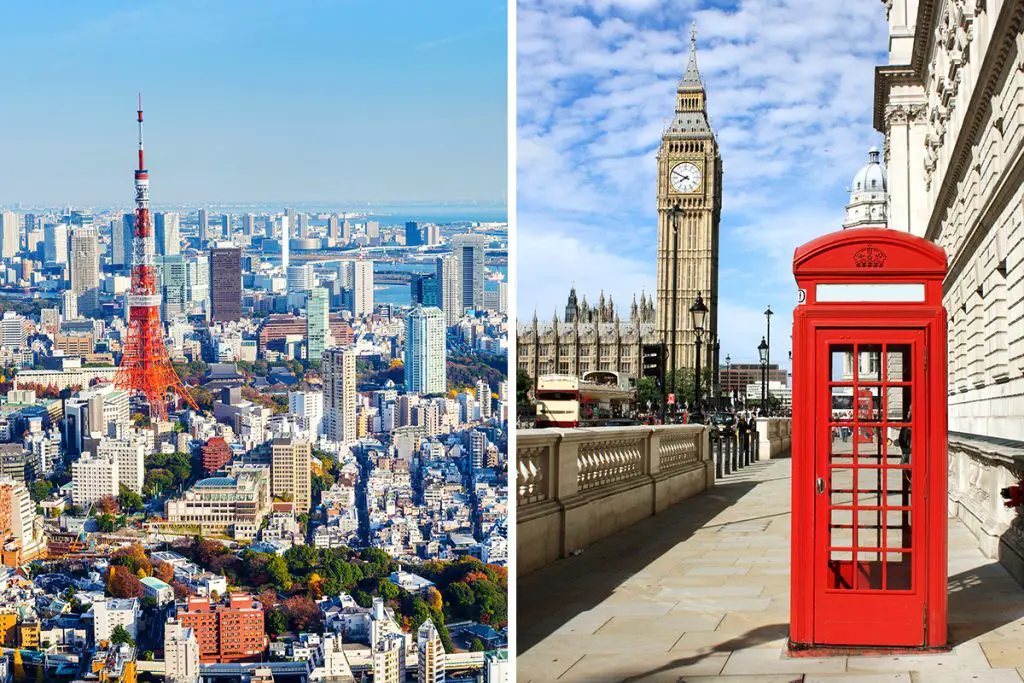Each city has a legacy that’s been shaped by various influences over the years. Yokohama’s history as an international port adds a global touch, while Osaka’s merchant past gives it a down-to-earth spirit. Intrigued yet? Let’s dive deeper to help you make an informed choice.
History & Culture
First off, let’s get a better sense of the history and culture that define these two captivating cities. Knowing what makes each city tick can help you decide where your interests align.
Yokohama is Japan’s second-largest city and has a history steeped in international trade. In 1859, it opened its port to foreign ships, which led to a mix of Western and Japanese cultures. You’ll notice this in the architecture and local customs. Even the atmosphere has a cosmopolitan feel. It’s a place where old meets new, and global meets local.
In contrast, Osaka is often dubbed the “nation’s kitchen” and has historically been a merchant city. It’s less about the international blend and more about deep-rooted Japanese traditions. Here, the culture thrives on human connection and a strong sense of community. Think of local festivals and neighborhoods that still retain an old-world charm.
However, it’s worth noting that both cities are not stuck in the past. Modernity has found its way into their cultural landscapes, with Yokohama leading in technological advancements and Osaka shining as a hub for contemporary art and entertainment.
Both Yokohama and Osaka offer opportunities to immerse yourself in a blend of old and new. Each city has a distinct personality molded by its past yet always looking toward the future.
So, where will your cultural curiosity lead you? Yokohama, with its international flair, or Osaka, with its grounded roots in Japanese tradition? The choice ultimately rests with you.
Attractions & Activities
So, you’re craving some sightseeing and activities that go beyond the ordinary, right? Both Yokohama and Osaka won’t disappoint you in this department. Let’s break it down and see what makes each city a gem for those in search of unique experiences.
In Yokohama, the Landmark Tower skywalk gives you a panoramic view of the city from 273 meters (896 feet) up in the air. If that doesn’t tickle your fancy, how about stepping into the past at Sankeien Garden, a traditional Japanese garden with historical buildings moved from all over the country. The garden is like a peaceful retreat in the middle of the city.
Osaka, on the other hand, brings you close to the wonders of marine life at the Kaiyukan Aquarium, one of the largest public aquariums in the world. For a historical touch, Osaka Castle and its surrounding park are must-visit spots. This iconic castle is not just a sight to behold but also an excellent spot for understanding Japan’s feudal past.
For art enthusiasts, Yokohama has the Yokohama Museum of Art, which showcases both modern and contemporary art pieces that’ll stir your imagination. Osaka counters this with the National Museum of Art, an underground facility that makes the most of its limited space to exhibit an eclectic range of modern art.
In summary, Yokohama offers a blend of the modern and the historical, with attractions ranging from towering skyscrapers to serene gardens. Osaka isn’t far behind with its mix of natural beauty and historical landmarks. Where you decide to go will depend on what you’re most eager to experience: the historical elegance of Yokohama or the diverse attractions of Osaka?
Beaches
Ready to soak up the sun and feel the sea breeze? Both Yokohama and Osaka offer coastal experiences that are sure to leave you refreshed. Let’s see what each city has in store for you.
Yokohama’s go-to beach is Zushi Beach, approximately 17 kilometers (10.5 miles) away from the city center. It’s not just about sunbathing here; the area is often used for windsurfing and other water activities. The view of Mount Fuji on a clear day is a bonus.
On the other hand, Osaka provides you with Suma Beach, located around 25 kilometers (15.5 miles) from the city. Known for its golden sands, it’s also a popular spot for swimming. Unlike Zushi Beach, you won’t catch a glimpse of Mount Fuji here, but the sunsets are pretty spectacular.
In Yokohama, you’ll also find Shonan Beach, another popular spot, especially among surfers. It’s located about 24 kilometers (15 miles) from Yokohama and often becomes a hub for water sports during the summer.
Osaka’s Nishikinohama Beach Park is another good pick. It’s 16 kilometers (around 10 miles) from the city center and offers a more tranquil atmosphere compared to Suma Beach. This beach is known for its scenic beauty and is a great place to relax.
Both cities offer beach experiences that suit a variety of moods and preferences. Yokohama gives you choices with views of Mount Fuji and activity-focused spots like Shonan. Osaka’s beaches are more about serenity and natural beauty. Where would you prefer to let the sea waves greet you?
Eating, Drinking & Nightlife
Excited about trying new food, sipping unique drinks, and dancing the night away? Yokohama and Osaka both offer delightful experiences, but they do it in their own special way. Let’s unpack the culinary and nighttime adventures each city offers.
Yokohama is a paradise for lovers of Chinese food, thanks to its famous Chinatown, the largest in Japan. Here you can enjoy an array of authentic Chinese dishes, from dumplings to Peking duck. Of course, being a port city, seafood is also a big deal in Yokohama.
Osaka is often called the “kitchen of Japan.” Street food here is legendary. Takoyaki (octopus balls) and okonomiyaki (savory pancakes) are must-tries. It’s the perfect place to walk, eat, and absorb the lively local culture.
When it comes to drinks, Yokohama offers a unique experience at its many craft beer bars. The city has its own Beer Village where you can sample locally brewed beers. Microbreweries here take the art of brewing seriously, offering a variety of flavors from fruity to full-bodied.
In Osaka, sake is the star. The city is surrounded by areas famous for their sake production, and you’ll find plenty of bars where you can taste different grades of this traditional Japanese rice wine.
For nightlife, Yokohama tends to be more laid-back. You’ll find a lot of waterfront bars and lounges where you can enjoy a peaceful evening. Osaka is more bustling when the sun goes down. The Dotonbori area comes alive with neon lights, street performances, and music, making it a playground for night owls.
In summary, your choice between Yokohama and Osaka might come down to your culinary and nocturnal preferences. Whether you’re into craft beers and a relaxed evening in Yokohama, or more interested in bustling street food scenes and vibrant nightlife in Osaka, both cities have distinct offerings that can cater to different tastes.
Shopping
Ready to shop ’til you drop? Whether you’re after the latest fashions or unique souvenirs, Yokohama and Osaka have got you covered. Let’s dive into what each city offers for shopaholics.
Yokohama is home to several high-end malls like Landmark Plaza and Queen’s Square. These shopping complexes house international brands as well as designer boutiques, offering a diverse range of fashion and accessories. For a more traditional shopping experience, you can visit the Yokohama Red Brick Warehouse, where you’ll find local crafts and souvenirs.
Osaka, meanwhile, offers a shopping experience that’s both diverse and exciting. Shinsaibashi Shopping Arcade is a must-visit. It’s one of the oldest shopping districts in Japan and offers everything from modern fashion to traditional Japanese wares. Then there’s Den Den Town, the electronic and anime paradise, where you can find all sorts of gadgets and collectibles.
Both cities also offer unique markets. Yokohama has the Yokohama Fish Market, where you can buy fresh seafood. Osaka has the Kuromon Ichiba Market, a food market that’s been serving the city for over 190 years. It’s a great place to pick up local spices, teas, and snacks.
In summary, both Yokohama and Osaka provide diverse shopping experiences. Yokohama leans more towards modern, upscale options, while Osaka offers a blend of traditional and contemporary shopping destinations. Depending on what you’re looking to buy, each city has its own set of advantages that could tip the scales in its favor.
Accommodation
When you’re planning a trip, figuring out where to stay is a big deal. Yokohama and Osaka offer a range of options, whether you’re traveling on a budget or looking for some luxury. Let’s see what each city has in store for you.
Yokohama, being a bit more laid-back, offers a variety of hotels near the bay area, giving you beautiful views of the waterfront. The InterContinental Yokohama Grand is one such option if you’re up for a bit of luxury. For budget travelers, there are several hostels and guesthouses available, particularly near the Kannai Station.
In Osaka, you might want to check out the Umeda district for upscale hotels like the Hilton Osaka or The Ritz-Carlton. Budget options are plentiful in the Namba area, where guesthouses and capsule hotels are commonly found.
Both cities also offer unique lodging experiences. Yokohama has a number of traditional Japanese inns, known as ryokan, where you can experience authentic Japanese hospitality. In Osaka, you can find “love hotels” designed for short stays, offering thematic rooms for an unusual lodging experience.
To sum it up, both Yokohama and Osaka provide a multitude of accommodation options suited for different budgets and tastes. Whether you’re looking for luxury by the bay in Yokohama or a unique experience in the heart of Osaka, each city has something special to offer.
Family-Friendliness & Children’s Activities
Traveling with family? You’ll be happy to know that both Yokohama and Osaka are great cities for children and families. Let’s compare what each destination offers in terms of family-friendliness and activities for kids.
Yokohama’s Hakkeijima Sea Paradise is an amusement park and aquarium combined. It offers various rides and shows that are perfect for children. There’s also the Anpanman Children’s Museum for younger kids who are fans of the popular Japanese character.
Osaka pulls you into a world of dreams and magic with Universal Studios Japan. This amusement park has rides and shows based on popular movies and is a big hit among families. The Osaka Aquarium is another kid-friendly spot where children can learn while having fun.
Both cities have zoos that can make for a fun day out with the kids. Yokohama has the Zoorasia, one of the largest zoos in Japan. Osaka has the Tennoji Zoo, which is located near the city center and is easily accessible.
When it comes to parks, Yokohama boasts spacious ones like Yamashita Park where children can run freely. Osaka counters this with Kema Sakuranomiya Park, a great location for families, especially during the cherry blossom season.
In summary, both Yokohama and Osaka are jam-packed with activities that cater to families and children. Whether you’re interested in theme parks, zoos, or outdoor spaces to let the kids burn off some energy, both cities have plenty to offer.
Getting There & Getting Around
Navigating a new city can be a daunting task. But don’t worry; getting to and moving around both Yokohama and Osaka is generally hassle-free. Here’s a breakdown of transportation in these cities.
Yokohama is about 30 kilometers (about 18.6 miles) from Tokyo’s Haneda Airport, making it relatively easy to reach by taxi, bus, or train. Osaka is serviced mainly by Kansai International Airport, which is approximately 50 kilometers (about 31 miles) from the city center. Direct trains and buses make the commute straightforward.
When it comes to local transport, Yokohama’s Minato Mirai Line connects most major attractions and is a convenient way to get around the city. Osaka has an extensive subway system, which is generally the fastest way to navigate the sprawling city. You can also use the Osaka Loop Line to get to many tourist attractions.
In Yokohama, the Akai Kutsu Bus is a great option for sightseeing, covering popular spots and offering a hop-on, hop-off service. Osaka’s equivalent is the Osaka City Bus, a convenient mode for short distances, especially when the subway doesn’t cover your route.
Both cities also offer rental bikes as an eco-friendly option. Yokohama’s Baybike service allows you to pick up and drop off bikes at multiple locations. In Osaka, you can use the Osaka Amazing Pass, which offers free bike rentals at various spots across the city.
To sum it up, Yokohama and Osaka offer reliable and diverse options for getting there and getting around. Whether it’s the convenience of Yokohama’s proximity to Tokyo or the extensive subway system in Osaka, both cities make it easy for you to explore their best attractions.
Weather
When you’re jetting off to a new destination, knowing what kind of weather to expect can be a real game-changer for your trip. Yokohama and Osaka offer quite different climate experiences throughout the year. Let’s delve into the specifics.
Yokohama experiences four distinct seasons, much like the rest of Japan. Summer, around June to August, is hot and humid with temperatures soaring to 86°F (30°C). In contrast, Osaka is hotter and more humid, reaching up to 95°F (35°C) in the peak summer months of July and August.
Winter in Yokohama, which lasts from December to February, tends to be chilly with temperatures hovering around 41°F (5°C). Osaka also experiences cold winters, but they are generally milder with temperatures around 46°F (8°C).
Spring in Yokohama is from March to May and is marked by mild temperatures ranging between 50°F and 68°F (10°C and 20°C). Osaka’s spring is similar but slightly warmer, especially during May when it can go up to 77°F (25°C).
Autumn in both cities is relatively mild and comfortable. Yokohama sees temperatures ranging from 59°F to 73°F (15°C to 23°C) between September and November. Osaka experiences similar weather, although it might be a degree or two warmer.
To summarize, Yokohama and Osaka offer varied weather experiences. Yokohama generally has milder summers and colder winters compared to Osaka. Both cities enjoy pleasant springs and autumns, making them great year-round destinations depending on what you’re looking for.
Safety
Your well-being is a top priority when you’re on vacation. When it comes to safety, both Yokohama and Osaka have their strong points. Let’s dig into the details.
Yokohama is generally a safe city with low crime rates, especially in comparison to other international cities. Areas like Minato Mirai and Chinatown are well-patrolled and have a strong police presence.
Similarly, Osaka is considered safe by most metrics. However, areas like Namba and Umeda can get a bit rowdy late at night, though they’re more lively than dangerous. It’s always good to be cautious, regardless of where you are.
On the topic of non-crime-related safety, Yokohama is prone to earthquakes, being in a seismic zone. Osaka, too, experiences seismic activities and has had its share of typhoons. Both cities have excellent disaster preparedness measures in place, so rest easy.
Both cities also have excellent healthcare facilities. In case of medical emergencies, you’ll find state-of-the-art hospitals and clinics in both Yokohama and Osaka, where English-speaking staff are usually available.
In summary, both Yokohama and Osaka offer a safe environment for travelers. While both cities are located in regions prone to natural disasters, their readiness and response systems are top-notch, as are their healthcare facilities.
Cost
One of the main factors that can make or break your travel plans is the cost. Both Yokohama and Osaka offer different price ranges for various things like food, lodging, and transportation. Let’s compare the two.
For a mid-range meal in Yokohama, expect to spend around 850-6,000 Japanese Yen (approximately $5.78 – $40.80). In Osaka, a similar meal might cost you about 1,000-5,700 Yen (approximately $6.80 – $38.76).
When it comes to lodging, a night in a three-star hotel in Yokohama averages around 131 US Dollars. In Osaka, a similar hotel would cost around 180 US Dollars.
Transportation costs are fairly similar in both cities. A one-way local train ticket in Yokohama costs around 200 Yen (approximately $1.36). In Osaka, you can expect to pay the same for a subway ride.
Both cities also offer various passes and discounts on transportation. Yokohama has a Minato Burari Ticket, which costs around 500 Yen for a day’s worth of unlimited travel on certain buses and trains (approximately $3.40).
Osaka has the Osaka Amazing Pass, which not only covers transportation but also offers free or discounted entry to various attractions for 2,800 Yen (approximately $19.00).
In summary, both Yokohama and Osaka offer similar cost ranges, with Osaka being slightly cheaper in some aspects. Whether you’re budget-conscious or looking to splurge a little, both cities have options to cater to your needs.
Which Is Better – Yokohama or Osaka?
Choosing between two dynamic cities like Yokohama and Osaka can be a daunting task. Each city has its unique strengths and attractions that can appeal to different travelers for various reasons. So, how do you decide? Here’s a comprehensive wrap-up to help you make that call.
Starting with history and culture, Yokohama boasts a vibrant blend of the old and new, seen in its architecture and cultural institutions. Osaka, on the other hand, offers a deep dive into traditional Japanese culture, from its ancient shrines to its bustling street markets. If you’re a history buff, Osaka might be more up your alley.
When it comes to attractions and activities that don’t involve beaches, shopping, or nightlife, Yokohama offers a milder climate and a myriad of options like parks and museums. Osaka is the place for those who prefer a more active, bustling atmosphere with hotter summers, featuring various outdoor activities and festivals.
As for beaches, we didn’t delve into those specifics, but it’s worth mentioning that both cities offer different kinds of coastal experiences, which could be a deciding factor for some.
In the realm of eating, drinking, and nightlife, both cities have their merits. Yokohama provides a more international flavor, while Osaka is famous for its street food and local cuisine. Depending on your gastronomic preferences, this could be a crucial point in making a choice.
Regarding shopping, Yokohama has a Western-influenced scene with a focus on high-end brands and modern shopping malls. Osaka leans towards traditional markets and local boutiques. Your shopping list might help determine your destination in this case.
Accommodation in Yokohama tends to be a bit pricier but offers more modern amenities. Osaka offers more budget-friendly options, albeit with fewer luxuries. Family activities are abundant in both, but Yokohama might offer a quieter, more relaxed atmosphere compared to Osaka’s vibrant hustle and bustle.
For transportation, both cities have well-connected, efficient systems. However, Yokohama is slightly closer to Tokyo, which might make it more accessible for those flying into Tokyo’s international airports.
Weatherwise, Yokohama has a milder climate overall, while Osaka experiences hotter summers. Depending on the season of your travel, this might sway your decision. Safety in both cities is excellent, though Yokohama has a slight edge with lower crime rates. Lastly, the cost of travel can be a bit higher in Yokohama, especially when it comes to dining and accommodation.
In conclusion, if you’re looking for a quieter, more Westernized experience with milder weather, Yokohama is your go-to. If you’re after a more traditional Japanese experience with a buzzing atmosphere and are willing to cope with more heat, Osaka is the place to be. Both cities are fantastic in their own right; it all boils down to what you’re looking to get out of your Japanese adventure.

